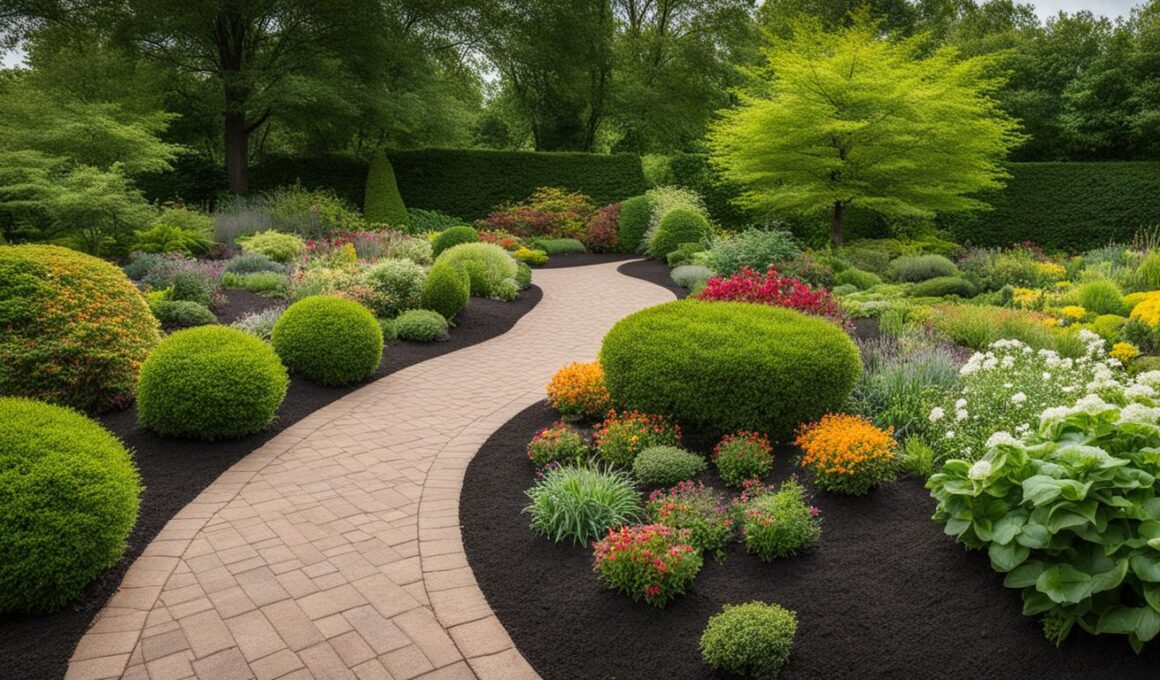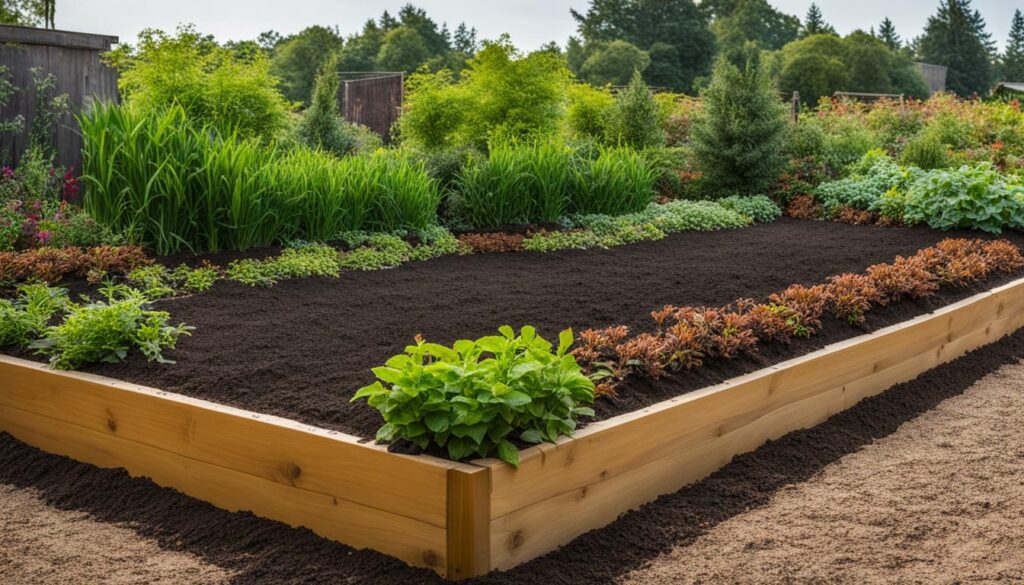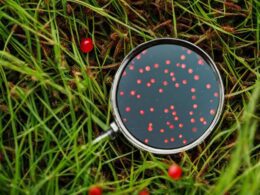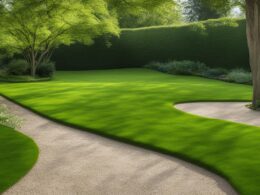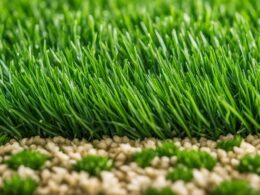Are you tired of spending hours pulling pesky weeds from your garden? Achieving a weed-free garden requires proper planning and maintenance. One key consideration is the timing of applying Preen, a pre-emergent weed preventer, in relation to mulch. Understanding the optimal timing for applying Preen can help you achieve the best results in maintaining a weed-free garden.
Preen is specifically designed to create a barrier in the soil and mulch, preventing weed growth before it even starts. Mulch, on the other hand, provides a protective covering for the soil, helping to retain moisture and deter weed growth.
So, what is the best approach when it comes to applying Preen and mulch? The answer lies in the sequence of application. To achieve optimal results, it is recommended to apply Preen after the mulch is in place.
By applying Preen after mulch, you allow it to create a protective barrier on top of the mulch layer, preventing weed seeds from germinating. This strategic combination provides a double defense against weeds, giving you a better chance of maintaining a weed-free garden.
Remember, it is crucial to follow the instructions on the Preen product label for the correct application rate and timing. This ensures that you are using the product effectively and maximizing its weed-preventing capabilities.
Now that you know the ideal timing for applying Preen, you can confidently take control of weed prevention in your garden. Say goodbye to unwanted weeds and hello to a beautiful, low-maintenance landscape. Stay tuned for the next sections of our Preen Application Guide, where we will delve deeper into the benefits of mulch in weed prevention and gain a better understanding of Preen and its role in maintaining a pristine garden.
The Benefits of Mulch in Weed Prevention
Mulch serves multiple purposes in the garden, including weed prevention. By creating a layer of coverage over the soil, mulch helps to block sunlight, preventing weed seeds from germinating. In addition to weed control, mulch also helps retain moisture in the soil, keeping plants hydrated. It acts as a source of organic matter as well, as it breaks down over time, improving soil health.
One of the key benefits of using mulch for weed prevention is its ability to block sunlight. When you apply a layer of mulch around your plants, it creates a barrier that prevents weed seeds from getting the light they need to sprout and grow. This significantly reduces the number of weeds that can take root in your garden, saving you time and effort in weed removal.
Mulch also plays a crucial role in moisture retention. By covering the soil, it helps to slow down evaporation, ensuring that the water you provide to your plants stays in the soil for longer. This is especially beneficial during hot summer months or in areas with limited rainfall. Conserving moisture in the soil not only keeps your plants hydrated but also reduces the need for frequent watering, saving you time and conserving water.
Furthermore, mulch serves as a source of organic matter for your soil. As the mulch breaks down over time, it adds valuable nutrients to the soil, improving its overall health and fertility. This organic matter helps create a favorable environment for beneficial soil organisms, such as earthworms, that contribute to soil aeration and nutrient cycling.
When using mulch for weed prevention, it’s important to choose the right type of mulch for your garden. Organic mulches, such as wood chips, straw, or shredded leaves, are ideal as they break down slowly, providing long-term benefits to the soil. Avoid using mulches that contain weed seeds or are prone to mold, as this can lead to more weed problems in your garden.
To maximize the benefits of mulch in weed prevention, apply a layer of mulch that is around 2-3 inches thick, making sure to avoid piling it up against the stems of your plants. This will provide adequate coverage for weed suppression while allowing your plants to breathe and grow properly.
Understanding Preen and Its Role in Weed Prevention
Preen is a popular pre-emergent weed preventer that is highly effective in creating a weed barrier in the top layer of soil and mulch. This powerful product is specifically designed to prevent weed seeds from germinating, providing long-lasting weed control for your garden.
It’s important to note that Preen does not kill weeds that have already sprouted; its main function is to stop new weeds from growing, giving you a head start in maintaining a pristine garden.
To maximize the effectiveness of Preen, it is recommended to apply it after the mulch is in place. This strategic timing allows Preen to create a protective barrier on top of the mulch layer, effectively preventing weed seeds from reaching the soil and germinating.
When using Preen, it’s crucial to follow the instructions on the product label for the correct application rate and timing. This ensures that you achieve the best results and maintain a weed-free garden throughout the season.
Benefits of Using Preen:
- Prevents weed seeds from germinating
- Creates a weed barrier in the soil and mulch
- Reduces the need for manual weed removal
- Provides long-lasting weed control
- Easy and convenient application
By understanding how Preen works and implementing its effective application, you can save time and effort in weed prevention, allowing you to enjoy a beautifully maintained garden without the hassle of frequent weeding.
Remember, a little bit of preparation with Preen goes a long way in keeping your garden weed-free and thriving.
Conclusion
In conclusion, incorporating Preen and mulch into your gardening routine can be a highly effective strategy for preventing weeds and maintaining a beautiful, weed-free garden. Mulch acts as a primary defense against weeds by providing coverage and moisture retention for the soil, while Preen adds an extra layer of protection by creating a weed barrier on top of the mulch.
To achieve optimal results, it is recommended to apply Preen after the mulch has been properly laid down. This timing allows the Preen to effectively establish its weed prevention properties in conjunction with the mulch barrier, preventing weed seeds from germinating and impeding the growth of unwanted plants.
By following the guidelines outlined in this article and adhering to a regular maintenance schedule, you can ensure an effective application of Preen and mulch for long-lasting and efficient weed prevention. With fewer weeds to contend with, you’ll have more time to focus on the beauty and health of your plants and flowers, creating a flourishing garden that will be the envy of your neighbors. Happy gardening!
Should I Apply Preen Before or After Using Rubber Mulch, Especially If I Have Dogs?
When it comes to rubber mulch safety for dogs, applying Preen before or after using rubber mulch depends on the type of Preen. If using a pre-emergent weed killer like Preen, it’s best to apply before adding the rubber mulch to prevent weeds. However, if using a post-emergent weed killer, apply after to avoid any potential harm to pets.





